From reuse of aging facilities to expansion of new ones, our MedEd leaders discuss the trends that will affect design in this space for decades to come.
By: Ben Niebauer, RA, LEED AP BD+C // Associate Principal, Education Market Leader and John Ryan, AIA, LEED AP // Associate Principal, Project Manager
“He who rejects change is the architect of decay.” — Harold Wilson
We’ve always loved that quote, even if change comes suddenly in the form of an unexpected crisis (like a pandemic). Wilson should know — he served as Prime Minister of the UK during the turbulent late 1960s and mid-’70s. For DesignGroup’s university clients, embracing change is especially timely, and crucial.
There was one upside to all the disruption of the pandemic: we were given more than 100 weeks of empirical evidence and data on a whole slew of existential questions: How important is human contact? How can you teach without? What works well remotely and what doesn’t? Each is urgent, relevant…and yet to be fully answered. But they’re accelerating changes on virtually all college campuses.
As both observers and designers of change, we noticed several shifts in thinking worth talking about. Let’s dig in.
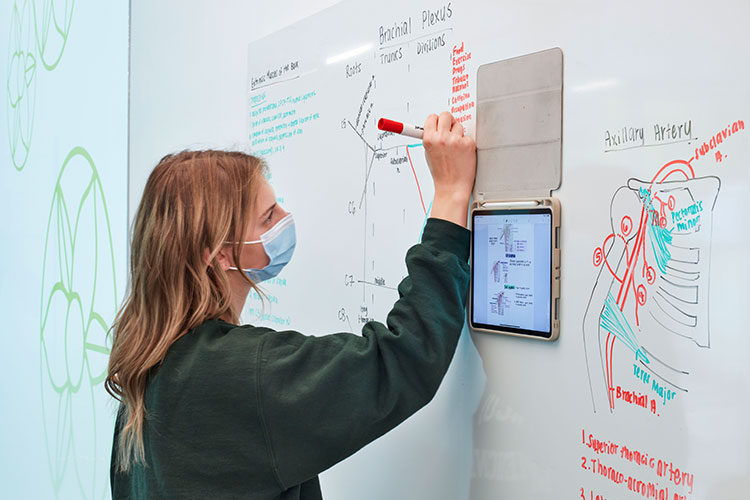
1. Shifts in Teaching Environments
As pedagogies continue to evolve, so too must the learning spaces that support them. Prior to 2020, universities were grappling with what to do with their aging, tiered lecture halls, which presented all kinds of challenges: They no longer supported modern case-based learning, they occupied colossal amounts of square footage, and they were challenging and costly to renovate. And yet, when these same institutions were forced to deliver their content online, colleges discovered that many of these larger classes performed better. Acoustics were easier. Attendance and engagement went up. Life became easier for students and faculty alike. In medical education specifically, some of these sites even served as COVID testing centers. (Heroic efforts by DesignGroup client OU Heritage College of Osteopathic Medicine were covered by the media.) Many institutions have adopted online platforms for proctoring exams, allowing them to operate much more efficiently, effectively, and safely. Our takeaway: Lecture halls may not go away, but universities need to shift their thinking about what role they serve.
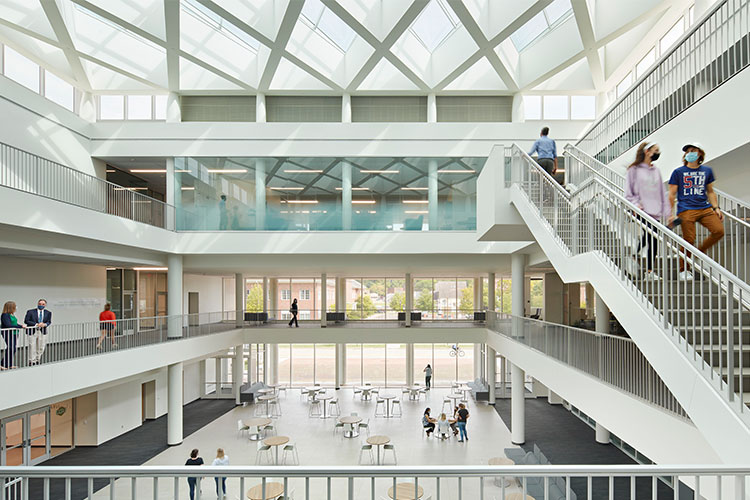
2. Shifts in Research
Not all medical research looks the same. Nowhere is this more evident than in the health sciences. While neither Bunsen Burners nor motion/movement labs have gone away, an increasingly large amount of research has moved to computer- and office-based methodologies. This shift requires a different type of infrastructure: fewer rooftop fans and massive boiler rooms, more data centers and IDF (Intermediate Distribution Frame) rooms. In short: Less pipes, more wires.
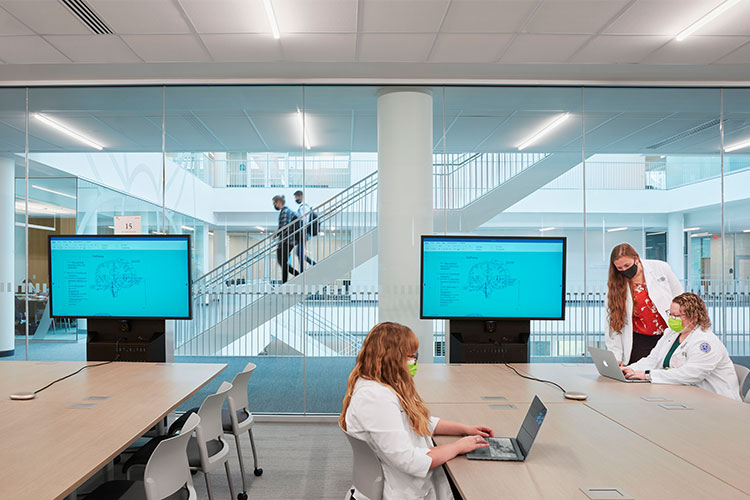
3. Shifts in Working
The way we work is changing. Universities – once replete with insular fiefdoms of faculty offices – have shifted their mindsets (and their allocation of square footage) back to their core mission: learning. The notion that tenured faculty are entitled to a prescribed amount of square footage, or a large, palatial office built in the 1900s, no longer represents the needs of a fast-evolving workplace. Mobility, collaboration, brand, engagement, wellness, sustainability, culture – these are just a few global concepts that must be embraced when designing effective working environments for faculty and staff.
4. Shifts in Wellness
Colleges in the health sciences often emulate the medical environments that their students matriculate to. Physically, this is of course no more evident than the large, highly specific simulation centers that every program uses to train its students. Increasingly, however, it is the psychological needs of students, staff, faculty, and patients that both our colleges and hospitals must attend to.
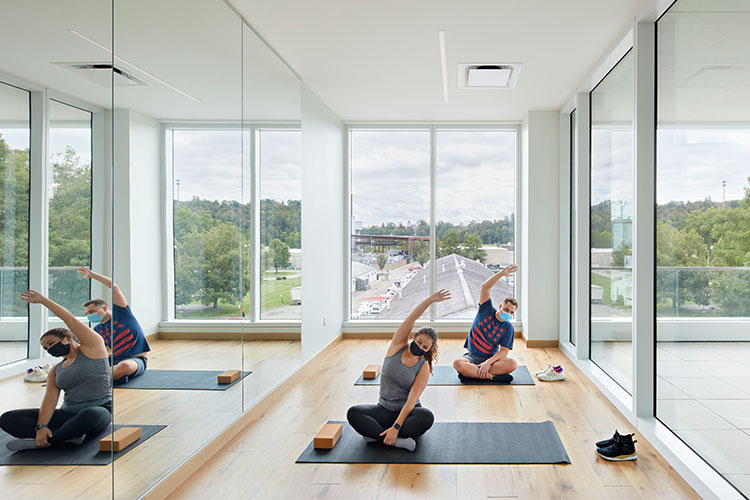
Even as new medical professionals enter the field, burnout is impacting hospital systems at an alarming rate — and colleges cannot fill these ranks fast enough. Studies from the Association of American Medical Colleges and the Cleveland Clinic Lerner College of Medicine predict a shortage nationwide of over 120,000 doctors and 510,000 nurses by the year 2030 . A horizon that is no longer that far away.
To combat burnout in both the collegiate and professional realms, institutions are seeking more creative ways to create healthy environments for their people to live, work, and recover. These changes may be policy-based (like creating protected time for wellness in people’s daily schedules) or they may be physical changes to environments (providing natural daylight and views to all regularly occupied spaces of buildings). The USGBC’s LEED rating system has been around for a while, and has helped institutions use their resources more wisely, but their most important resource – people – need that same love. Enter the WELL Building Standard, which looks more closely at the needs of the occupants of the buildings that we design. By shifting our thinking from building to the occupants of them, we give ourselves the opportunity to support their health and lower these levels of burnout.
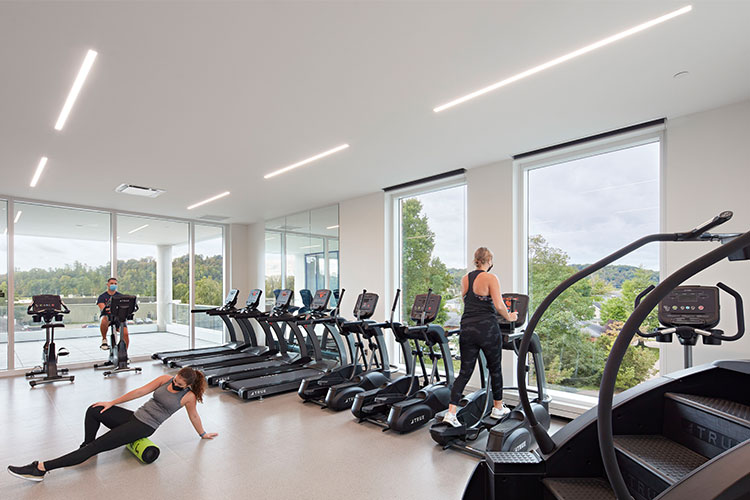
5. Shifts in Location and Reach
Since 2002 there has been significant expansion in medical education, and though too early to tell, that growth may continue to accelerate following the pandemic. Over the last 20 years, 30 new accredited MD-granting schools and 39 new DO-granting schools have been established. Similarly, there has been an expansion in nursing education, but primarily within existing schools.
No question, there is new demand for healthcare services due to the pandemic and our aging population. The growth of medical education institutions is in response to this need, but increasing the number of med ed students and graduates, and therefore number of healthcare providers, has typically been constrained by needs for both space and growth of new faculty. Given this demand, it’s easy to see this investment in medical education programs is one that both serves a societal need, as well as can provide new service lines and potential new revenue streams for higher education institutions.

According to the Association of American Medical Colleges (AAMC) more than 30% of medical schools now have a regional campus, which is defined as a distinct site from the central or administrative campus, but not independently accredited, reflecting a need for health education in both urban and rural communities. Many of these schools are also partnered with Area Health Education Centers (AHECs) in support of rural health initiatives — and an awareness of the unique challenges rural healthcare practitioners face must be considered a key component of their medical education. There are now 300 AHECs across the country, including seven in Pennsylvania and 10 across Ohio.
5. Shifts in Interest Levels (they're growing!)
Interest in medical programs and applications for prospective students increased dramatically during the pandemic. Per the AAMC, applications increased 18% across the country for allopathic and osteopathic medical programs alone, and increases were as high as 30% for some schools. Within this data lies another more compelling story: application numbers increased dramatically for people of color, as well as for persons of varied age ranges. Generally speaking, the pandemic provided more exposure to medical professions, increasing awareness and visibility of healthcare providers from their own background, and a recognition that this profession could be a reality for everyone. We’re hopeful it will result in a much more diverse population serving their communities during times of great need.
To paraphrase Harold Wilson, now is the time to embrace change and be the architect for the future of medical education and healthcare. DesignGroup has guided higher education and healthcare institutions through cultural and technical shifts for 50 years. We bring that collective expertise to every engagement we enter. We can help you with additions to your facility, enhancement of the existing spaces you have, or provide clarity and strategy for what you might need next.
---------------
For more insight on MedEd trends, please see our earlier article, Designing a Healthier, More Sympathetic MedEd Environment, or learn more about our specific services in the healthcare field.

Ben Niebauer, LEED AP BD + C // Associate Principal, Education Market Leader
Ben leads DesignGroup’s education practice. He has focused his 21 year career on exceptional design and planning for academic facilities. Ben has significant experience designing student centered environments including medical education facilities, laboratories, over 5,500 student housing beds, and has assessed and planned over 30 million square feet of higher education campuses. Ben is an active participant with the Society of College and University Planners.

John Ryan, AIA, LEED AP // Associate Principal, Project Architect
John practices architecture as a collaborative process, engaging with the client, user groups, stakeholders and other project partners to discover the project solution. His experience includes a range of building types, including civic, healthcare, higher education and commercial projects. Common to each of these projects is the use of design as a tool for engagement, conversation and problem solving for the entire design team. John’s interest in wellness design stems from his interests in environmental and social sustainability, and his belief that design can yield powerful results for the integration of built and natural environments, as well as strengthen the social fabric of our cities and communities.
